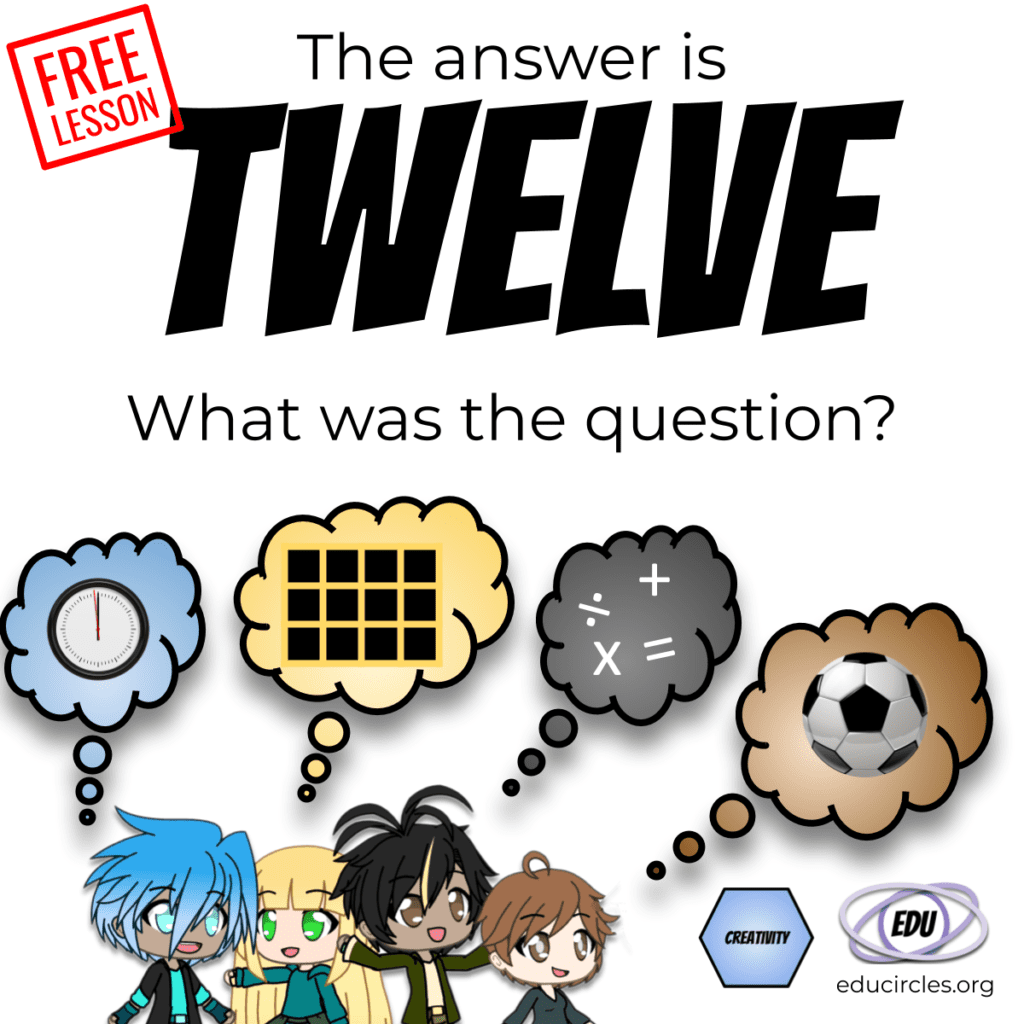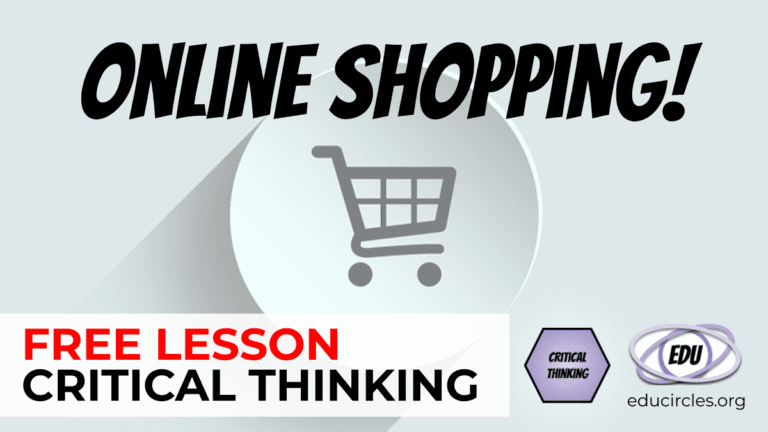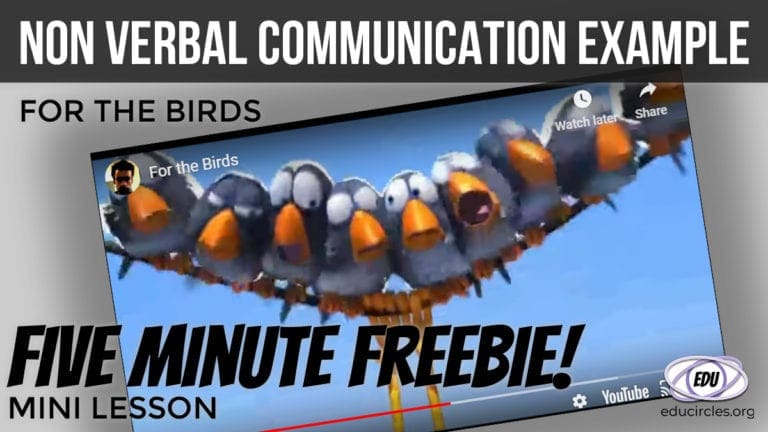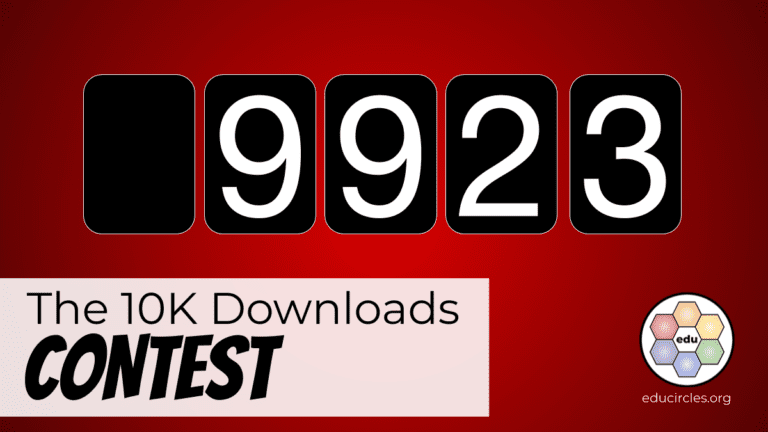FREE Creative Thinking Lesson: Grow a Creative Mindset with “Twelve”
Click here to get the FREE Creative Thinking Lesson Plan right away.
The answer is Twelve. What was the question?
Take the following challenge: In 30 seconds, how many different questions can you come up with that have the answer twelve.
(Watch the YouTube video to start the clock…)
Creativity is MORE than just being artsy!
Creativity is a process that can be taught and assessed.
And this is a FREE Creative Lesson Plan to help get your students to be more creative.

Why do we need a FREE Creative Thinking Lesson?
Well, to be honest, because most teachers don’t think they need to explicitly teach creativity.
Teachers tend to fall into one of the following camps:
- Creativity means you’re good at art. I don’t teach art – the art teacher will do that stuff.
- You can’t teach Creativity. You’re either born with it or not.
- You can’t assess Creativity. Who am I to say what you’re doing is creative (or not.)
- I don’t have time to teach creativity – let alone figure out how to teach or assess creativity.
I used to fall into all 4 categories.
But, creativity is more than just art.
Creativity is an important life skill and it’s a transferable 21st century skill that our students need to cultivate and grow.
And the more I started to learn about creativity, the more I began to recognize that I was pretty creative in some of the things I did. (Even though I’m not a very good artist, yet.)
(And then the more I realized we needed to have more conversations about how to teach creativity. Hence, the FREE creative thinking lesson…)
Business, today, is all about innovation.
And innovation is all about new ideas, methods or products.
But, school is all-too-often about getting the right answer and jumping through hoops…
How do our students suddenly become creative when they graduate if all we train them at school is to be efficient, precise, and focus on the right answer?
But, even if we aren’t going into business or becoming employees, creativity is a life skill.
Why?
Because using creativity in problem solving can help us, well, solve problems and come up with solutions that we hadn’t considered.
We use creative thinking to solve LIFE problems:
- We keep fighting over the same stuff
- I just finished school and there are no jobs!
- (Hello, teachers! This sound familiar? I just finished my teaching degree and I can’t get a full time teaching contract because there are no jobs!)
- How am I going to pay for this?
- Nobody is listening to us!

How do you teach creative thinking?
Creative Thinking is a process.
- We can use strategies to help us become better creative thinkers
- We can assess and judge our creative thinking.
We created this FREE Creative Lesson Plan called “Twelve” to get your students thinking about:
- what creativity is,
- where new ideas come from, and
- how we can assess creativity. (We call it points in the game, but teachers will recognize this as assessment and evaluation.)
This is just the start of a conversation about Creativity. In “Twelve”, student generate ideas and then examine the ideas to see if they’re…
- repeats of old ideas,
- new variations of current ideas, or
- something brand new…
“Twelve” Activity overview:
The answer is Twelve. What was the question?
If you don’t show students the picture above, or the YouTube video, or give them any hints, this can be a really tough question.
- Twelve?
- What do you mean?
- Umm, I don’t know. 6 + 6?
When we’re under pressure (like you only have 30 seconds to answer the question), it can be hard to come up with creative ideas.
Our little YouTube video isn’t really designed to help people be creative. The goal is to show that we need creativity in our everyday lives and it’s something we need to explicitly teach our children. (Hence, this FREE Creative Lesson Plan that we’re giving away…)
Learning objective in this FREE Creative Lesson Plan:
- Practice creative thinking and innovation
- Brainstorming different answers.
- Trying to come up with different / diverse answers
- Being rewarded for different answers.
We suggest playing 3 rounds of Twelve:
The slideshow and the handout in the download file walks you through the three rounds of “Twelve.” There are discussion points in the lesson plan PDF as well as in the slidenotes of the presentation.
The first round is difficult
- Students are used to being told how to do a problem.
- In this case we are only telling students that the answer is 12 and as long as they come up with a question and the answer to that question is 12, then their work is correct.
- Although we provide a handout, you could give students a blank page. Sometimes a blank page is really daunting – where do we start? How do we create something out of nothing? These are good conversation points.
The second round is a little easier.
- This gives students an opportunity to be inspired by some of their classmates’ answers from round #1.
- The points from the first round are locked.
- Some students will try to be creative by coming up with variations on a theme. So if they see if someone uses a calendar as part of their question, they might come up with a different counter question where the answer is 12.
- During the discussion, hopefully the students who ventured into an entirely different type or style of question can share some of their thinking / thought process. This will most likely be a train of thought or stream of consciousness, But the goal is to direct students attention that they can draw upon life experiences from other areas and try to apply them into this situation.
- It also gives an opportunity to reflect on strategies. Ideas seem to come out of nowhere, but usually they’re connected to some life experience. I remember when we… One time we…
In the third round, the slideshow presents some types / styles of questions that your group of students may not have discovered themselves….
- By presenting possible themes in the third round, we’ve given students an opportunity to try to find their own themes in the first two rounds.
- If we gave them more explicit instruction in the first round, students may not have tinkered around with other possibilities.
Some Creative Thinking strategies that students might try:
- Trial and error
- Looking around the classroom for inspiration
- Thinking about things that they’ve done in the past
- Sounding it out
- Making up an answer
- Adding an adjective
- Doing a variation of the theme. Seeing what another student did and trying to come up with their own question in that style.
Teacher Tip: Some students may complain about copying.
If a student looks at a category or style that someone else is using and then come up with your own iteration or version of it, the original creator might feel that they’re copying.
This comes back to the idea that in school, there’s only one right answer, and being first is best.
(After all, don’t we reward speed? Wow! You finished that really quickly! You must be smart…. Actually, on second thought, maybe it depends on the kid. We might send them back to double-check their work because we know there might be some careless errors… Anyway, back to copying…)
Here are a few possible talking points:
- When you accuse someone of copying, you’re accusing them of doing something bad and then this puts people into the mindset that they don’t want to be wrong and it makes us less brave to be creative. In this game, as long as they don’t copy the exact same question, then it’s a different question.
- A lot of great products are variations on a theme. For example Apple might have introduce the world to the concept of an iPad, but now lots of companies are doing their version of a tablet. Same thing with smartphones. The company might’ve innovated and come up with the concept of a powerful computer in your pocket, but now there are lots of great variations of smart phones out there.

What do you get in the zipped file?
You get some cool swag:
- A lesson plan PDF with 10 pages of detailed discussion points for 3 days / lessons.
- A slideshow with 35 slides in Microsoft Powerpoint and Google Slides format
- A 1 page handout worksheet for students to record questions with the answer 12.
Twelve is part of a larger How to be MORE Creative lesson package
Note: The slides from this Taste of Creativity come from our larger Exploring the Six Cs: Creativity lesson package, specifically the following:
- Day 4, 5, 6 (slides 50-84)
In the Exploring the Six Cs: Creativity lesson package, we provide over 14 lessons to do with your class to help students recognize that
- creativity is a learnable skill and
- we can all become more creative.
Creativity is MORE than just being artsy! Creativity is a process that can be taught and assessed.






